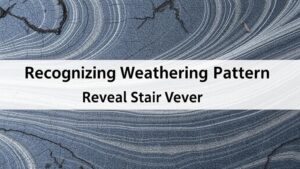Testing Stream Gravel for Traces of Native Copper Nuggets
Testing Stream Gravel for Traces of Native Copper Nuggets
Native copper nuggets, formed through natural processes, hold considerable interest for both amateur prospectors and professional miners. Testing stream gravel for traces of these nuggets can reveal significant mineral wealth. This article explores the methodologies, techniques, and considerations involved in effectively identifying native copper in alluvial deposits.
Understanding Native Copper
Native copper is a natural elemental form of copper, typically found in igneous and some sedimentary rock deposits. It has a distinct metallic luster, malleability, and a characteristic reddish-brown color. In stream environments, copper can be liberated from its parent rock through weathering and mechanical processes, leading to its presence in the gravel beds of rivers and streams.
Geological Context
Native copper is commonly found in regions with volcanic or igneous activity. Notable locations include:
- The Keweenaw Peninsula of Michigan, where historical mining yielded significant quantities of native copper.
- The Copper River Delta in Alaska, known for prolific copper deposits.
- Areas in Arizona and New Mexico, where copper is associated with porphyry deposits.
Understanding the geological history of these regions can help focus exploration efforts, ensuring higher chances of success when testing gravel.
Methodologies for Testing Stream Gravel
To effectively identify native copper nuggets within stream gravel, practitioners employ various methods. Here are the commonly used techniques:
Panning
Panning is a foundational technique that uses a shallow pan to separate heavier particles, such as native copper and gold, from lighter sediment. The process involves:
- Collecting samples of gravel from the stream bed.
- Submerging the gravel in water within a pan and shaking it to allow lighter materials to wash away.
- Observing the remaining material for metallic objects, including copper nuggets.
In practice, panning can be an effective way to quickly assess gravel samples in the field for any visible signs of native copper.
Magnetic Testing
Native copper possesses magnetic properties that distinguish it from many other materials in the gravel. Employing a handheld magnet can assist in identifying copper presence:
- Scraping the magnet through gravel samples to attract magnetic materials.
- Examining the collected materials for copper particles or nuggets.
This method is particularly valuable in areas with high sediment concentrations, as even small copper particles may be identifiable through magnetic attraction.
Assaying Methods
For more precise identification, geochemical assaying can be employed, particularly in cases where visual inspection reveals potential copper nuggets:
- Sending gravel samples to a laboratory for spectroscopic analysis, which quantifies the copper content present.
- Using X-ray fluorescence (XRF) equipment for onsite analysis, providing immediate feedback and thorough elemental profiling.
These methods allow prospectors to determine viability for further extraction efforts based on data-driven insights rather than reliance on visual cues alone.
Case Studies: Success Stories in Prospecting
Numerous prospectors have successfully used the aforementioned methods to uncover native copper nuggets, illustrating effective applications of testing techniques:
- In 2016, a small mining team in the Upper Peninsula of Michigan utilized panning and assays to locate a significant deposit of copper nuggets. r findings were subsequently verified and formed the basis for a small-scale mining operation.
- A prospector in Alaska employed magnetic testing to discover several pounds of native copper along a riverbank, prompting a more extensive exploratory venture protected by state regulations.
Challenges and Considerations
While the pursuit of native copper nuggets is often rewarding, several challenges must be understood:
- Access regulations and water rights can limit where testing can occur, making it essential to research local laws and permissions.
- Discrimination between copper and other metallic materials, such as iron, requires practice and familiarity with material characteristics.
Prospectors should also consider environmental best practices to minimize ecological disruption.
Conclusion and Actionable Takeaways
Testing stream gravel for native copper nuggets combines traditional methods with modern science to unearth mineral wealth. By employing methods such as panning, magnetic testing, and geochemical assays, prospectors can maximize their chances of discovery.
- Research the geological contexts known for native copper, focusing exploration efforts in these areas.
- Use a combination of testing methods for the most effective sampling and verification process.
- Stay informed on local regulations and best environmental practices to ensure sustainable exploration.
By adhering to these strategies, individuals can successfully explore the potential of stream gravel and contribute to the broader field of mineral prospecting.



